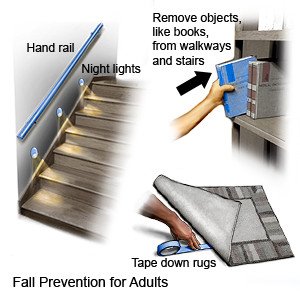Hansen Disease (Leprosy)
Medically reviewed by Drugs.com. Last updated on Aug 4, 2025.
Hansen disease, also called leprosy, is caused by a bacterial infection. The bacteria mainly spread in droplets when an infected person sneezes or coughs. It takes several months of close personal contact for infection to happen. A mother cannot spread the bacteria to her unborn baby. The bacteria are also not spread through touching or being next to an infected person for a short time. Most people are naturally immune from infection.
DISCHARGE INSTRUCTIONS:
Seek care immediately if:
- You have severe pain.
- You have vision loss or eye pain.
- You notice changes in the shape or size of your fingers, toes, nose, or eyebrows.
- You have an injury or burn because you could not feel the injured area.
- You have a wound that does not heal or is red, swollen, or draining fluid.
Call your doctor if:
- You have new or worsening skin lesions, nodules, or other symptoms.
- You have questions or concerns about your condition or care.
Medicines:
- Antibiotics are given to treat the bacterial infection. A combination of 2 to 3 antibiotics are usually used together. Antibiotic treatment usually continues for 1 to 2 years. It is important to continue taking antibiotics as prescribed to make sure the infection is gone.
- Steroids or other anti-inflammatory drugs may be given for nerve damage.
- Cycloplegic eye medicine may be given if you have an ulcer on your cornea. The medicine will dilate your pupil and relax your eye muscles.
- Take your medicine as directed. Contact your healthcare provider if you think your medicine is not helping or if you have side effects. Tell your provider if you are allergic to any medicine. Keep a list of the medicines, vitamins, and herbs you take. Include the amounts, and when and why you take them. Bring the list or the pill bottles to follow-up visits. Carry your medicine list with you in case of an emergency.
Treatment options
The following list of medications are related to or used in the treatment of this condition.
Manage Hansen disease:
- Clean around your eye if you have a cornea ulcer. Gently remove any crusty buildup around your eye.
- Check your skin daily. Look for redness and swelling, and feel for warmth. Sores can form where your skin makes contact with objects or other body parts.
- Care for your feet. Check your feet each day for cuts, scratches, calluses, or other wounds. Look for redness and swelling, and feel for warmth. Wear shoes that fit well. Check your shoes for rocks or other objects that can hurt your feet. Do not walk barefoot or wear shoes without socks. Wear cotton socks to help keep your feet dry.
- Prevent falls if you have loss of feeling. Move with care, and stand up slowly. Wear shoes that support your feet. Ask about walking aids, such as a cane or walker. You may want to install railings or nonslip pads in your home, especially in the bathroom. Ask for more information on how to prevent falls.

Follow up with your doctor as directed:
Write down your questions so you remember to ask them during your visits.
© Copyright Merative 2025 Information is for End User's use only and may not be sold, redistributed or otherwise used for commercial purposes.
The above information is an educational aid only. It is not intended as medical advice for individual conditions or treatments. Talk to your doctor, nurse or pharmacist before following any medical regimen to see if it is safe and effective for you.
Further information
Always consult your healthcare provider to ensure the information displayed on this page applies to your personal circumstances.
